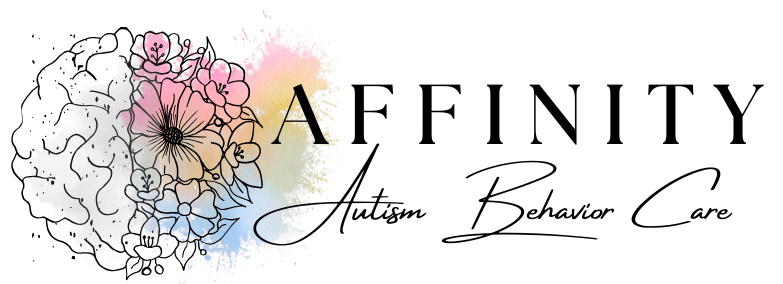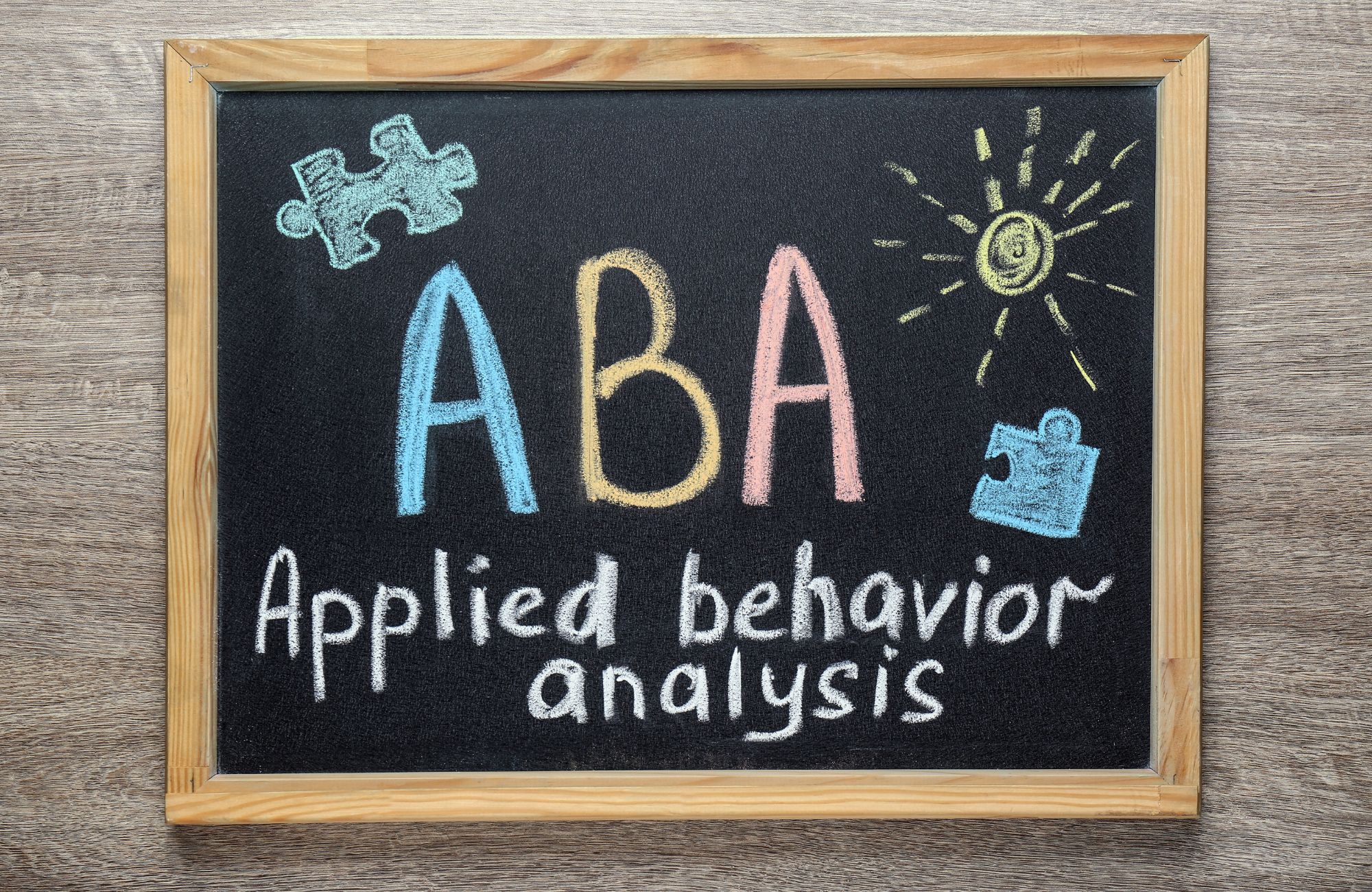When a child is diagnosed with autism, many families begin searching for support and a way to help their child thrive. That’s when three important letters often come up: ABA. So, what does ABA therapy stand for, and why do so many professionals recommend it?
ABA stands for Applied Behavior Analysis. It’s a science-backed approach that helps children build everyday skills and reduce challenging behaviors. By understanding how behavior works, ABA therapy gives kids the support they need to learn, grow, and succeed in daily life.
What Does ABA Stand For? Understanding Applied Behavior Analysis
Applied Behavior Analysis is more than just an acronym—it’s a comprehensive science dedicated to improving socially significant behavior. When we break down what ABA stand for, each word has a specific meaning:
- Applied: The interventions address real-world behaviors that matter to the child and family
- Behavior: Observable, measurable actions that can be studied objectively
- Analysis: Systematic methods to understand why behaviors occur and how to change them
This approach has earned recognition from major medical organizations. The US Surgeon General identifies ABA as an effective treatment for autism spectrum disorder, while the American Psychological Association considers it a best practice intervention.
Board-Certified Behavior Analysts (BCBAs) provide ABA services after completing extensive training. They typically hold a master’s degree in psychology or behavior analysis, pass a national certification exam, and maintain ongoing education requirements.
How ABA Therapy Works
ABA therapy works by understanding the relationship between environmental events and behavior. The approach uses several key principles:
The A-B-C Model
Every behavior follows a pattern:
- Antecedent: What happens before the behavior
- Behavior: The actual action or response
- Consequence: What happens after the behavior
By analyzing these patterns, ABA therapists can modify antecedents and consequences to encourage desired behavior and reduce challenging behaviors.
Positive Reinforcement
When a target behavior is followed by something valuable (like praise, preferred activities, or tangible rewards), the person becomes more likely to repeat that behavior. ABA focuses on identifying what motivates each individual child and using those preferences to encourage positive behavior change.
Data-Driven Decisions
Trained behavior analysts and registered behavior technicians carefully track behaviors, measuring frequency, duration, and intensity. This data guides treatment decisions and shows concrete progress over time.
Skills Developed Through ABA Therapy
ABA therapy programs address multiple skill areas essential for daily functioning:
Communication and Language Skills
- Verbal and non-verbal communication
- Conversation initiation and maintenance
- Following instructions
- Expressing needs and wants
Social Skills
- Playing with peers
- Taking turns and sharing
- Understanding social cues
- Building friendships
Daily Living Skills
- Personal hygiene routines
- Toilet training
- Dressing independently
- Eating skills and table manners
Learning and Academic Skills
- Attention and focus
- Following classroom routines
- Pre-academic concepts (colors, shapes, numbers)
- Problem-solving abilities
Behavioral Management
- Self-regulation strategies
- Emotional control
- Reducing problematic behaviors
- Teaching social skills in natural settings
Who Provides ABA Services?
Board Certified Behavior Analysts (BCBAs)
BCBAs design and oversee ABA therapy programs. They must:
- Hold a master’s degree or higher in behavior analysis or a related field
- Complete supervised fieldwork experience
- Pass the Behavior Analyst Certification Board exam
- Maintain continuing education requirements
Registered Behavior Technicians (RBTs)
RBTs work directly with children under BCBA supervision. They implement the treatment plans and collect data during therapy sessions. Their consistent interaction with the child helps build trust and ensures therapy remains engaging and effective.
Family Involvement
Parents and caregivers receive training to support skill development throughout the day, ensuring new skills generalize beyond formal therapy sessions. Ongoing collaboration between families and the therapy team is key to long-term success and meaningful progress.
Types of ABA Programs
Early Intensive Behavioral Intervention
Comprehensive programs typically provide 25-40 hours per week for young autistic children. Research shows this intensity can lead to significant improvements in intellectual functioning, language development, and daily living skills.
Focused ABA Services
Targeted interventions addressing specific behaviors or skills often require fewer hours per week.
These programs are ideal for children who need support in just one or two areas, such as improving communication or reducing a specific behavior. Focused ABA allows therapists to work intensively on individual goals while fitting more easily into a family’s schedule.
School-Based ABA
ABA techniques are integrated into educational settings to support learning and behavior in the classroom.
Therapists collaborate with teachers and school staff to help students follow routines, stay on task, and interact with peers. This approach helps children succeed academically while building essential classroom and social skills in a familiar environment.
In-Home ABA Therapy
Services are provided in the family’s home environment, promoting skill generalization and family participation. Therapy sessions take place where the child is most comfortable, making it easier to practice real-life skills like following directions, sharing, or toileting. Parents and caregivers are actively involved, allowing them to support progress between sessions and reinforce new behaviors throughout the day.
Evidence and Effectiveness
More than 20 research studies have demonstrated that intensive, long-term ABA therapy improves outcomes for many children with autism. Studies show improvements in:
- Intellectual functioning
- Language and communication skills
- Daily living skills
- Social functioning
- Academic performance
The approach is effective for people of all ages, from early childhood through adulthood, though early intervention typically produces the most significant results.
Getting Started with ABA Therapy
Steps to Begin ABA Services:
- Consult Your Pediatrician: Discuss whether ABA is appropriate for your child and obtain necessary referrals
- Check Insurance Coverage: Verify your benefits and pre-authorization requirements
- Research Providers: Look for qualified BCBAs with experience serving children similar to yours
- Schedule Assessment: Participate in initial evaluation to determine treatment goals
- Develop Treatment Plan: Work with your BCBA to create individualized objectives
Questions to Ask Potential Providers:
- What are your staff qualifications and training requirements?
- How do you measure progress and share data with families?
- What does family training and involvement look like?
- How do you ensure skills generalize to different settings?
- What is your approach to reducing challenging behaviors?
Insurance Coverage for ABA Therapy
Many types of private health insurance are required to cover ABA services, though coverage varies by state and plan. All Medicaid plans must cover medically necessary treatments for children under 21, including ABA therapy when prescribed by a doctor.
Tips for navigating insurance:
- Contact your insurance company to understand your specific benefits
- Obtain prior authorization if required
- Keep detailed records of all communications
- Appeal denials with supporting documentation from your child’s treatment team
Common ABA Techniques
Discrete Trial Training
Breaking skills into small, teachable steps with clear instructions and immediate feedback. Each trial is structured with a specific prompt, response, and consequence to help the child learn efficiently. This method is especially helpful for teaching early skills like eye contact, imitation, and basic language.
Natural Environment Teaching
Embedding learning opportunities into everyday activities and play. Therapists follow the child’s lead and use naturally occurring situations to reinforce target behaviors. This approach helps promote the generalization of skills across settings and people.
Task Analysis
Breaking complex skills into smaller, sequential steps that can be taught systematically. Each step is taught one at a time, often using prompts and fading strategies until the full skill is mastered. Task analysis is commonly used for teaching daily routines like handwashing, getting dressed, or brushing teeth.
Functional Communication Training
Teaching appropriate ways to communicate needs and wants to replace problematic behaviors. This technique helps reduce frustration by giving the child a clearer way to express themselves. It’s often used for children who struggle with verbal speech or exhibit behaviors like tantrums or aggression when they can’t communicate effectively.
Conclusion
Applied Behavior Analysis, or ABA therapy, is a structured and effective way to help children with autism learn vital life skills and manage challenging behaviors. By focusing on each child’s unique needs, ABA promotes steady progress in areas like communication, social development, and independence. With consistency, data-driven strategies, and family support, it offers a clear path toward long-term growth and meaningful change.
At Affinity ABC, we’re passionate about delivering compassionate, evidence-based ABA therapy that meets your child’s unique needs. Our team of certified professionals offers personalized in-home, school-based, and community-based support across New Mexico. Ready to take the next step? Contact us and discover how our dedicated team can help your child thrive.
FAQs
What is ABA therapy used for?
ABA therapy is primarily used to help children with autism spectrum disorder develop communication skills, social skills, daily living skills, and reduce challenging behaviors. It’s also effective for treating other developmental disorders, attention deficit hyperactivity disorder, and various learning challenges.
What is an example of ABA treatment?
A common example is teaching a child to request items appropriately: when the child reaches for a toy, the therapist prompts them to say “toy please,” then immediately provides the toy and praises them when they comply. Over time, the child learns to use words instead of grabbing to get what they want.
What are the pros and cons of ABA therapy?
Pros include evidence-based effectiveness, individualized treatment plans, measurable progress, and insurance coverage; cons can include time intensity (25-40 hours/week), cost if not covered by insurance, and the need for highly trained providers. The therapy requires significant family commitment but often produces lasting positive outcomes.
Who benefits most from ABA therapy?
Children with autism spectrum disorder, especially those who start early intensive behavioral intervention before age 4, tend to benefit most from ABA therapy. However, individuals of all ages with developmental disorders, communication challenges, or behavioral difficulties can see improvements with properly implemented ABA programs.









